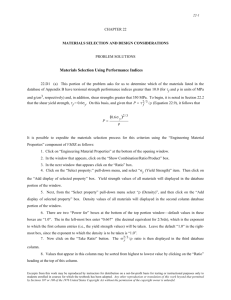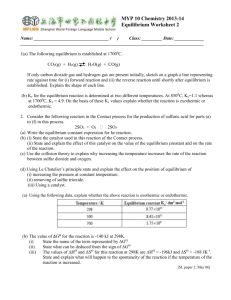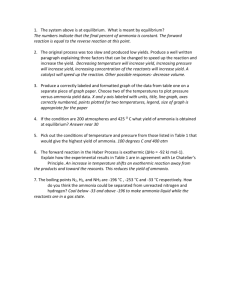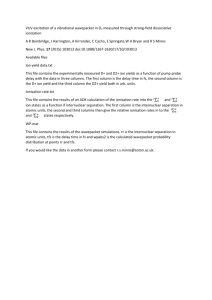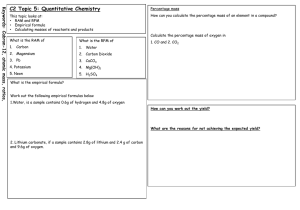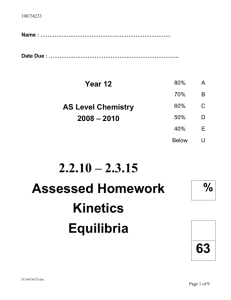Industrial chemistry
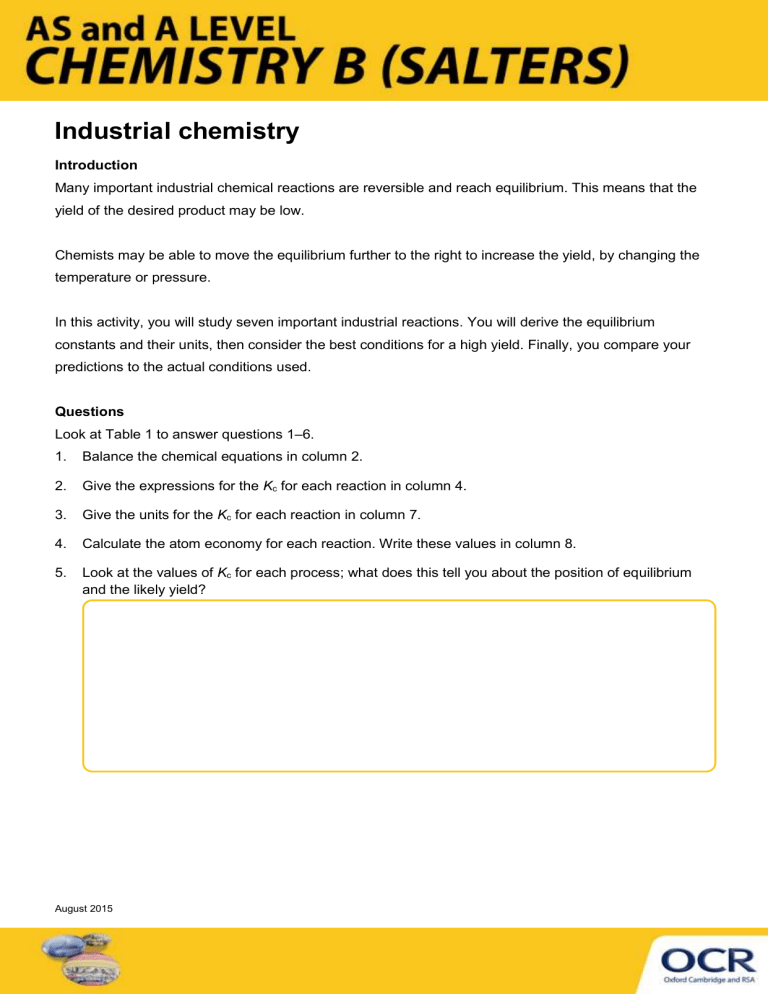
Industrial chemistry
Introduction
Many important industrial chemical reactions are reversible and reach equilibrium. This means that the yield of the desired product may be low.
Chemists may be able to move the equilibrium further to the right to increase the yield, by changing the temperature or pressure.
In this activity, you will study seven important industrial reactions. You will derive the equilibrium constants and their units, then consider the best conditions for a high yield. Finally, you compare your predictions to the actual conditions used.
Questions
Look at Table 1 to answer questions 1 –6.
1. Balance the chemical equations in column 2.
2. Give the expressions for the K c
for each reaction in column 4.
3. Give the units for the K c
for each reaction in column 7.
4. Calculate the atom economy for each reaction. Write these values in column 8.
5. Look at the values of K c
for each process; what does this tell you about the position of equilibrium and the likely yield?
August 2015
6. When the temperature is increased from 373 K to 773 K what happens to the value of K c
? Explain why it is different for different reactions.
Look at Table 2 to answer questions 7 –10.
7.
Fill in the best temperature (high or low) for a high yield of product in column 3.
8. Fill in the best pressure (high or low) for a high yield of product in column 4.
9. Which processes are not using the best temperature and pressure for a high yield? Can you explain why?
10. All the processes use a catalyst except one. Why do six use a catalyst and one not?
August 2015
Notes
High pressures are expensive because the container needs thick walls to withstand them. Large amounts of energy are needed to drive the fans to make this high pressure.
At high pressure sulfur( VI ) oxide and chlorine are very corrosive.
At high pressure ethene can polymerise or explode.
August 2015
Table 1
Process
Haber
Equation (unbalanced)
… N
2
+ … H
2
… NH
3
Contact
… SO
2
+ … O
2
… SO
3
Birkeland
–Eyde
… N
2
+ … O
2
… NO
Ostwald
… NH
3
+ … O
2
… NO + … H
2
O
Industrial ethanol
… C
2
H
4
+ … H
2
O … C
2
H
5
OH
Deacon
… HC l + … O
2
… C l
2
+ … H
2
O
Cativa
… CO + … CH
3
OH … CH
3
COOH
–905
–45
–117
–137 kJ
∆
r
H / mol
–1
Expression for K c
–92
K c
at
373 K
4 × 10 10
K c
at
773 K
7 × 10 9
Units for K c
Atom economy
–196
+180
1 × 10 23 2 × 10 13
3 × 10 –23 4 × 10 –11
>1 × 10 99 9 × 10 68
2 × 10 33 2 × 10 18
2 × 10
5 × 10
14
28
1 × 10 9
7 × 10 13
August 2015
Table 2
Process
Haber kJ
∆ r
H /
mol
–1
–92
Temperature for high yield
Contact
–196
Birkeland
–
Eyde
Ostwald
+180
–905
Industrial ethanol
Deacon
Cativa
–45
–117
–137
Pressure for high yield
August 2015
Actual temperature
/ o C
450
Actual pressure /
× 10 5 Pa
150
450
3000
200
300
450
140
2
1
10
60
1
30
Catalyst
Fe
V
5
None
H
I
3
2
O
Pt
PO
RuO rC l
4
2
4
